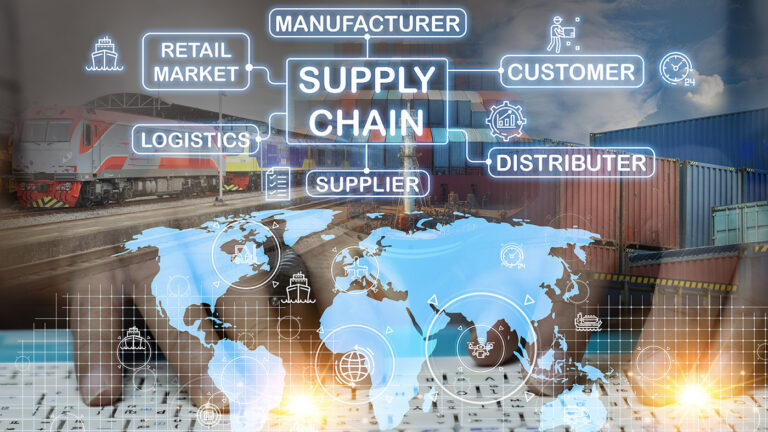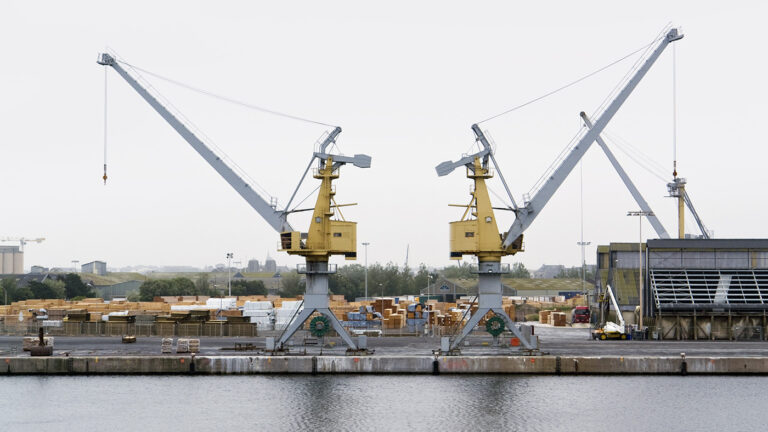Transcript
Hello, everyone. Welcome to this episode of the program. I’m Tyler Kern. Today, we’re gonna take you through Who river logic is?
Who are they? What do they do? How do they help businesses? How difficult is it to implement and so much more?
So we’re gonna be diving into all of this today with Carlos Centurion resident at river logic. Carlos, welcome. So, Carlos, introduce us to river logic. Tell us a little bit about who you are as a company and what your missions and what your goals are.
Yeah. So RiverLogic is a software company, cloud, cloud software. Mhmm. And, we rest on the vision that we want to change the way businesses make decisions by introducing a more of an end to end perspective in lens into that, as well as the, you know, advanced algorithms that recommend Okay.
If you got these objectives, you got these constraints or restrictions in your business, what’s the best combination of all that? That’s gonna maximize or minimize the objectives you have.
What do you feel like really differentiates you from other solutions in the marketplace? Other people that might that they do something similar, what makes river logic different?
The river logic is the only sort of truly end to end planning and design platform. Mhmm.
And, we leverage what we call a digital planning twin to do that. A digital planning twin is a digital representation of a firm used planning and design purposes. So it’s forward looking.
It’s able to capture and, digitize your end value chain from demand through your channels, your products, your resources, so your warehouses, your plants, all the way down to the relationship you have with these suppliers and how all of that incurs financial outcomes as well as sustainability outcomes like carbon emissions.
And then that we use a digital planning twin to create a forward looking baseline for how you’re likely to form. And then to run what is scenarios and say, Hey, if I change this, if I had this objective or that objective, how would that impact me? And River Logic is unique in the sense that most other solutions that you’ll find in the market are really designed for just a piece of that value chain. Right? Some are really logistics. Some are manufacturing. Some may be covered manufacturing logistics.
Some are all about demand, but they don’t cover the supply chain. Some are all about procurement, but they don’t look downstream from procurement. So we’re unique and, we can look end to end And everything that we do is translated into a financial outcome in the sense that we actually cover GAAP accounting. So we translate it into financial statements. So that c levels and managers in a company can look at the real impact on their P and L if they did this versus that.
And so I think that’s what makes river logic pretty unique. And, you know, we have different videos kind of playing behind us here. You have a bottling operation and appear you have, you know, shipping and logistics and that, that sort of thing. So tell me just about the different industries that you serve and, and, the different types of businesses that you work with.
We we serve industries where they have complexity to deal with.
And at the moment, we’re very focused on manufacturing natural resources, logistics, and to some extent retail. Mhmm. I think in the future, you’ll see us going into other industries, where there’s also a lot of constraints and a lot of complexity to deal with. But in terms of evolution, those are the the spaces that we’re focused on initially.
And who do you cater to? Who are the users of this technology that are really kind of the boots on the ground of it? Yeah. So it really is like, small, medium, large firms.
I think our smallest client is eight or ten million in revenue Mhmm. Per year. And our largest client is probably a hundred billion.
But within those companies, you know, the smaller clients will will be more senior people using it. Mhmm. In the larger clients, you will see planning and design teams that are using it.
Sometimes these are within supply chain, and sometimes these are in the strategy team. Where they really are able to look across their whole business, and and see things end to end. Also, I’d like to highlight that river logic supports the strategic solutions that we’ve been talking about, but also tactical solutions like supply planning, capacity planning, order allocation, and then very, like, near operational. So, production planning and scheduling is another example of that. So how can someone quantify the value of what RiverLogic is providing to their organization.
Are there metrics, are there numbers that they can look at? How do they go about doing that? Yeah. Certainly. A lot of our customers tell us the value, and it’s it’s it’s quite enlightening.
But when you turn on the digital planning twin, You will have a baseline. And the baseline will be matching what you’ve done in the past and what you plan to do in the future, and then you’ll start getting recommendations from the spanning to end that says, hey, do this, not that, or what if I do this, what if I do that? And that comparison, because we out output a P and L, it’s very straightforward to see the impact on something like customer service level, profit, growth.
And, depending on the type of solution, If it’s a strategic solution, we’ll typically see five to ten percent improvement in the net present value of a company. Mhmm. And so if a company is worth, say, ten billion it could be five hundred million or up to a billion in improvement in MPV. If it’s a more tactical solution, then we’ll start to see narrower numbers, like, maybe a a tactical planning that’s focused on profit optimization would see one to eight percent of sales in in additional profit.
Mhmm. And also an improvement in sales. And then the the very tactical operational solutions are more focused on a metric like improving throughput or reducing the addressable cost, such as lowering transportation cost. And there, you’ll see anywhere from a five to a percent improvement and whatever metric that you’re trying to address.
How do you hope to see river logic continue to grow and evolve, as you continue to grow as company? Where do you where do you see things moving in the future? We really aim to, cover the end to end decision making space. Mhmm.
And first in the industries that we’re focused on, but then to start getting into other industries. For example, health care.
If you think about a hospital is the ultimate constrained environment, right, with a lot of demand, always more demand that it can handle. Different ways our hospitals get paid because of the the ways that the patients are insured. Sure. And very complex relationship with their providers. Whether it’s insurance companies or the doctors or the nurses that work there, every industry has a picture like that inside And, we just started in manufacturing resources and logistics, because they’re more used to using things like optimization.
And they’re they’re a little bit more mature in their data approach.
But ultimately, I think we can have a massive impact if we’re focusing on some of these other industries. That really need this kind of solution.
So you mentioned complexities. Talk to me a little bit about implementation. How complicated is it to to implement riverlogic solution, and to get it up and running so that you see these benefits for your business?
Well, it’s actually pretty straightforward.
Everything we do is free of programming. Mhmm. So whether you’re drag and dropping the representation for the digital planning twin or configuring a report, there is no need for coding. So we typically see customer begin to realize value within ten to eighteen weeks.
From kickoff. So it’s really fast. And our teams are small. They’re nimble. They’re adjust. So we have lots of different ways that we can engage with customers.
Depending on their availability of time and data and other commitments.
And one of the things that you really emphasize is helping your customers make real decisions. What does that mean specifically? What does it mean to make real decisions?
And how impactful can that be for businesses? So we differentiate real versus assumptions. Mhmm. So when we put in place a digital planning tool in, it understands all the limitations of the business. Whether it’s because an asset is only available at certain hours a week, or the throughput rate is this, or your logistics capacity is y, or you only have a certain availability or supply, and extending over into demand and other parts of the business. And so when digital planning to win, outputs a scenario.
That scenario in, in, in most cases, executable in real life. It’s feasible. It’s something you could see yourself doing.
And we differentiate that from assumptions because in an assumed scenario, whether you’re using rules or hypothesis, maybe you’re building something in Excel, Most likely you’re going to miss some of those important constraints. Mhmm. So when you go and implement that scenario, it won’t be implementable.
And so we mean when we say real, we mean that it’s feasible. It’s something you could actually implement if you wanted to. Well, Carlos, thank you so much for going in-depth on who RiverLogic is and what your goals are and how you’re helping businesses. It’s been a pleasure getting a chance to learn more about you and, and about RiverLogic.
Likewise. I’ve enjoyed talking with you, Tyler. Well, I’ve enjoyed it as well. And everyone out there, thank you for joining us for this episode.
We hope you enjoyed it as much as we did. Stay tuned for more content coming your way from RiverLogic. But for this episode, for Carlos Centurion, I’m Tyler Curran. We’ll talk to you next time.



